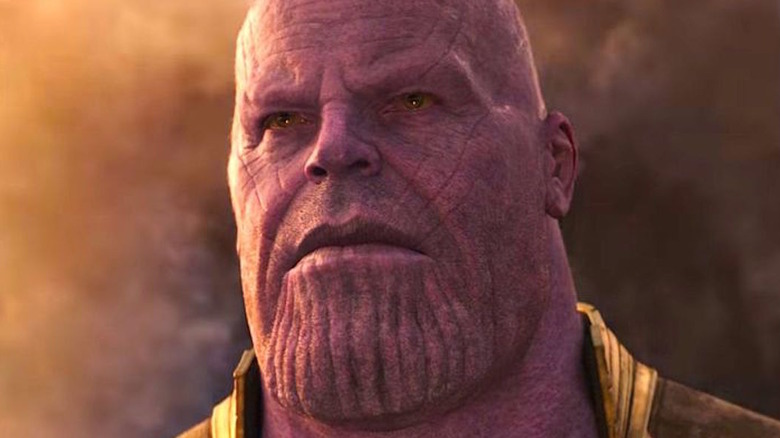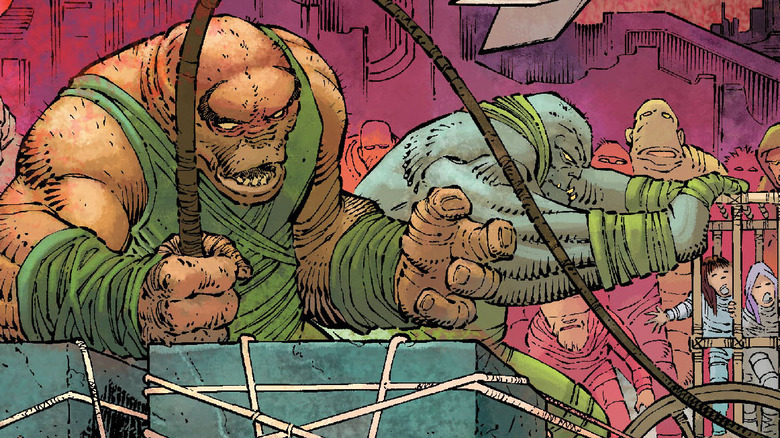Who Are The Deviants In The Marvel Universe?
Some of the most iconic shenanigans in comic book history have come thanks to the idea that every hero has an evil opposite. The grim Batman has the colorful Joker. Superman's optimism is contrasted by Lex Luthor's pragmatic worldview. The Human Torch used to fight a guy who shot glue everywhere. That part isn't technically related to anything, we just feel like people don't talk about Paste Pot Pete enough.
And there's only ever been one moral and aesthetic opposite to Marvel's Eternals: the Deviants. In order to fully understand these nasty nogoodniks from the dawn of time, you need to understand the Eternals themselves, which, as most comic book writers can attest, isn't super easy.
We begin a million years ago, give or take. The Celestials are Marvel's big, bright, colorful, cosmically-powered space giants from before "before" was a concept. Setting off into the universe, the Celestials seek out life in order to play Mr. Potato Head with its genetics. Stumbling upon the Earth, they find a group of Homo erectus and get down to the business of dinking with their DNA.
One batch of experiments leads the Celestials to unlock the human potential in primitive man, yielding a slow but steady chain of evolutionary events that eventually generates Paste Pot Pete, among several billion others. A more exciting development leads to the creation of the Eternals, or Homo immortalis, a group of undying superfolk with frequently Vitruvian features and a long list of varying superpowers.
And then there is the third group of test subjects: Homo descendus, the Deviants. If you didn't pick it up from context clues, they sort of got the short end of the stick.
Marvel's Deviants: uniformly weird, never not mean
If you ever had a Creepy Crawlers oven growing up and, either by accident or with dead-eyed sadistic purpose, added too much goo to the bug mould, you already have a decent grasp of what the Deviants are all about, physically speaking. The Celestials added two heaping scoops of chaos to their genetic structure, and the results were ... unsettling.
Deviants come in all shapes and sizes, taking a "the only constant is change" approach to physicality — think Mutants, but with an added dash of seemingly species-wide malevolence. Some of the outstanding weirdos even wound up inspiring myths about ogres and goblins and whatnot. Oh, also, according to the soft reboot of their story written by Neil Gaiman in 2006, the Celestials only made the poor sons of guns in the first place as a delicious living snack, like Pop Rocks but, you know, they scream.
Across the eons, the Deviants battled the Eternals, viewing them sort of like prettier, richer older sisters that nobody was trying to eat. For a while, they even ruled the ancient world thanks to the head start on human beings that their sci-fi origin story granted them. That came to an abrupt end around 18,000 years ago when the Celestials stopped by to put their foot down, bombing the Deviants into submission and driving the survivors underground.
With nearly fifty years of comic book history behind them and an origin story rooted in Jack Kirby's weirder years, there's plenty of strangeness to go around — all Skrulls are technically Deviants, for example, sometimes, depending on the continuity. Comics are hard. How much of that makes it to the big screen remains to be seen. The Deviants are set to make their MCU debut during the events of "The Eternals." Unless you consider Thanos (Josh Brolin) a Deviant, which he is, most of the time, depending on continuity.

